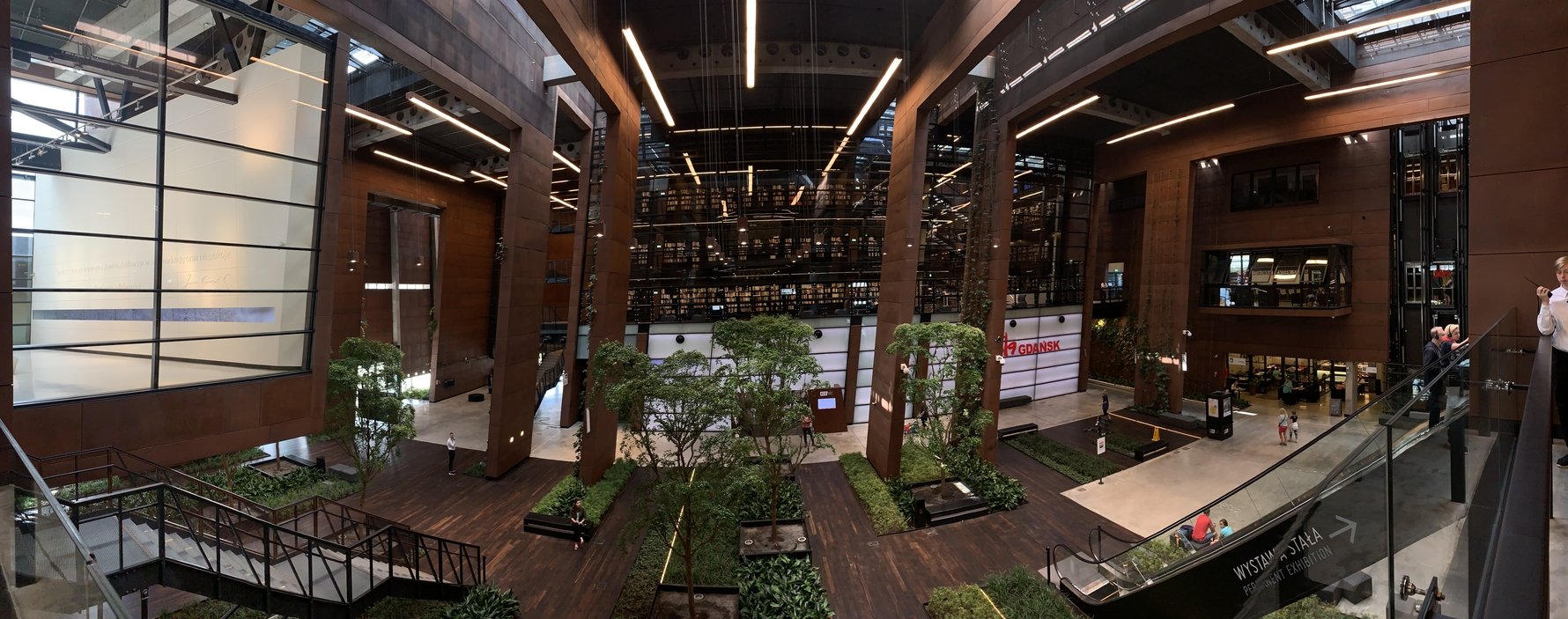
There are a number of aims to the centre. First and foremost it is designed to be a symbol of the victory of the Solidarity movement and the way that victory was achieved peacefully thanks to the power of people uniting in solidarity with each other. The 2005 joint-signatories who signed the building into life, stated that they wanted the European Solidarity Centre to “become the world’s centre for the ideas of freedom, democracy and solidarity to be fostered”. The building features a library, reading rooms and archives which are completely accessible to researchers and any interested reader alike. Conference rooms and other spaces are used to host debates, concerts and other projects of the ESC and outside associations aimed at working towards the common good. A viewing terrace on the roof allows visitors to look out over the remains of the Lenin Shipyards where the Solidarity movement was born.
The major attraction, however, is the permanent exhibition spread over two floors, seven different halls and occupying 3,000m2. While the building is free to enter and move around, this is the one part of the centre for which you need a ticket (Find ticket prices here). It tells the story of Solidarity; where it began, how it grew and ultimately where it led the people of Poland and the occupied countries of the Communist Bloc. It combines traditional display methods with some truly impressive state-of-the-art technology which allows visitors access to authentic artefacts, 3D projections, photographs, film, declassified security service documents and interactive displays. Allow yourself 2 to 3 hours to view the exhibition comfortably.
ECS Permanent Exhibition
The first hall (A) you will enter is called ‘The Birth of Solidarność' and is devoted to the strikes of August 1980. You’ll see the cab of crane operator Anna Walentynowicz, whose sacking close to her retirement created the spark that saw the shipyard rise up in protest. Authentic materials salvaged from the shipyard are used to tell the story with the former canteen table now supporting the interactive terminals and former workers helmets suspended over visitors’ heads onto which archive film is projected.
Moving into hall B, entitled ‘The Power of the Powerless’, you see the world that preceded the strikes of 1980 which give you an insight into the roots of the opposition movement and what the totalitarian regime looked and felt like. There are operational records from the security services and memories of the failed protests in 1970 which resulted in 45 deaths as they were ruthlessly crushed by security and military personnel.

Hall C brings you into the room dedicated to ‘Solidarność and Hope’. It’s here that you get a sense of the unexpected and unfamiliar freedom the strikes bought the country in August 1980 and the sixteen months that followed until the movement was outlawed and the country placed under Martial Law on December 13, 1981. Visitors are guided by a white and red trail which when reflected into the ceiling panel forms the legendary trade union’s logo.

Next comes ‘The War with Society’ and you are graphically given a sense of how the freedom and hope of the sixteen months following August 1980 was systematically destroyed. The space narrows and visitors are ushered toward a Militia van with the riot shields of Zomo (the armed paramilitary police) pressing you deeper into the hall. The terror and dread of the Martial Law period are conveyed while you witness the activity in the underground Solidarity movement as they try to rally the people to stand firm and resist. This chapter of the exhibition ends with the award of the Nobel Peace Prize to Lech Wałęsa in 1983.

Hall E hosts ‘The Road to Democracy’ and demonstrates the important role played by Polish-born Pope John Paul II (the former Bishop of Kraków Cardinal Karol Wojtyła). His messages of hope delivered during his pilgrimages to his homeland fuelled the struggle for freedom and inspired youth movements and society as a whole to renew their fight. The growing demands and the worsening economic crisis resulted in the governing regime agreeing to the Round Table talks in 1989. The subsequent partly-free elections saw Solidarity storm to victory and saw Poland become the first Communist Bloc country to win its freedom.

‘The Triumph of Freedom’ in the final hall shows how the changes in Poland reverberated across the Communist Bloc as country after country rose up and demanded democracy. Countries were reborn and countless new states emerged. As Lech Wałęsa later told President Barack Obama, “(the Poles) smashed the teeth of the Soviet bear and when he couldn’t bite anymore, the rest of the nations made their own freedom”. Visitors are invited to add a white or red message to the collection of those who have visited before in a symbol of solidarity.
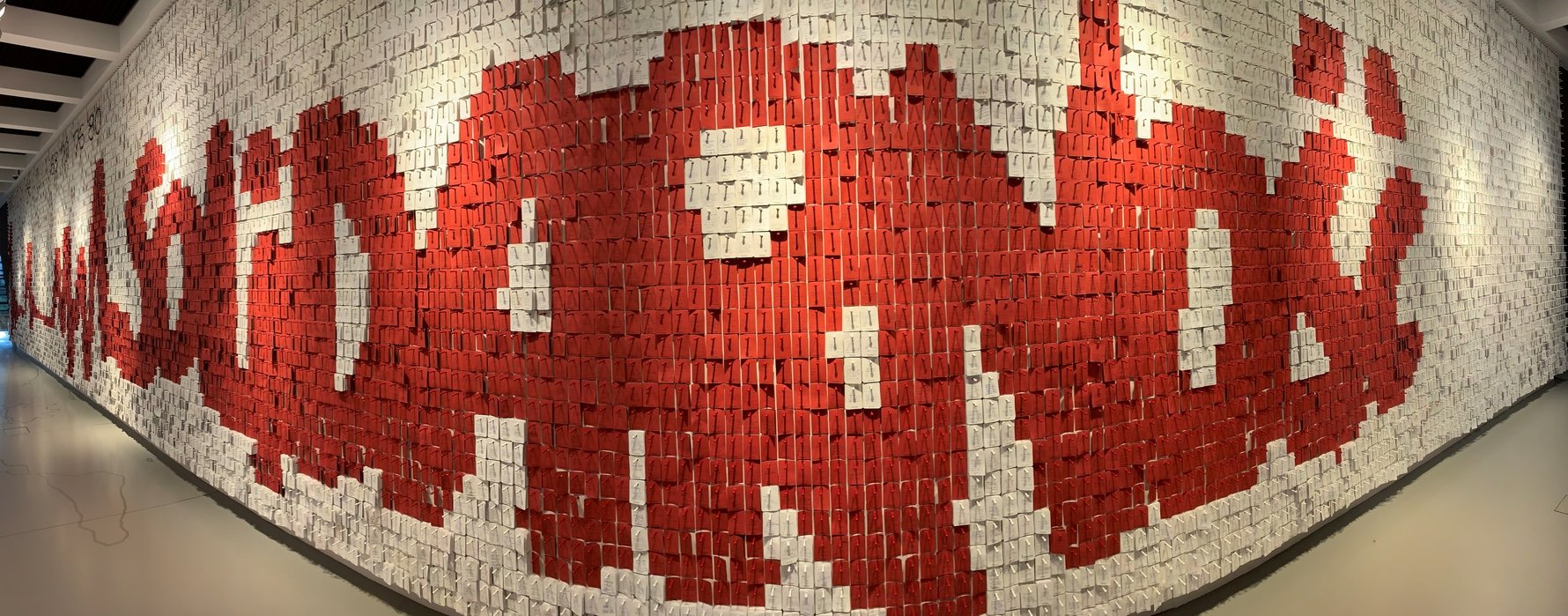
As well as visiting the exhibition you can also take a moment to visit the ‘Pope John Paul II Hall’ to reflect as you look out through the windows onto the Monument of the Fallen Shipyard Workers.
Excellent audio guides are available in Polish, English, French, German, Italian, Russian, Spanish, Swedish and the local Kashubian language. There is audio description for the visually impaired and sign language and loops for the hearing impaired. The entire space is designed to be accessible to all. You'll also find a gift shop, cafe, restaurant, a roof-top terrace where you can view the remains of the surrounding shipyards and relax and reflect on what is a very good portrayal of the Solidarity story indeed. Those with children should also find the Play Department interesting as well.


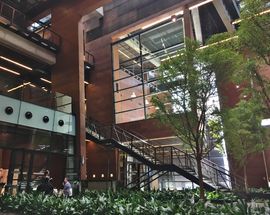
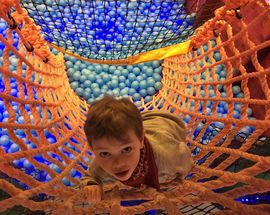
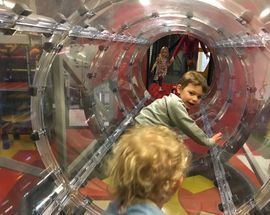
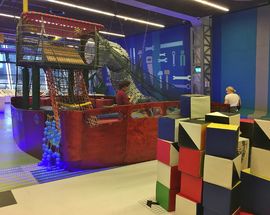
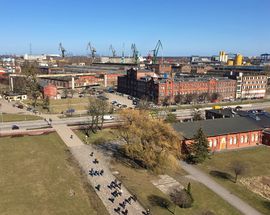
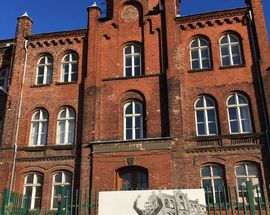
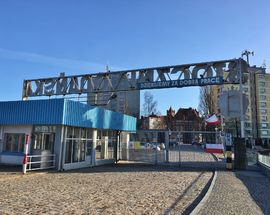
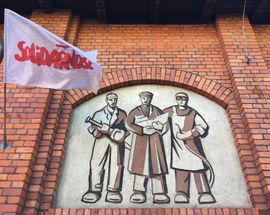
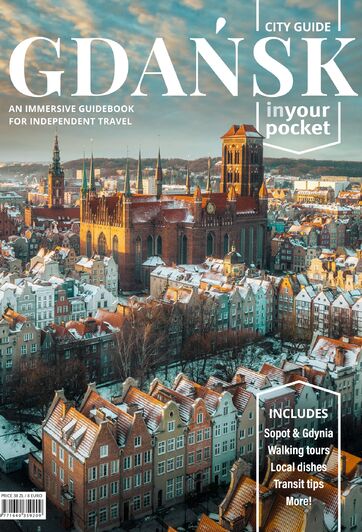
Comments